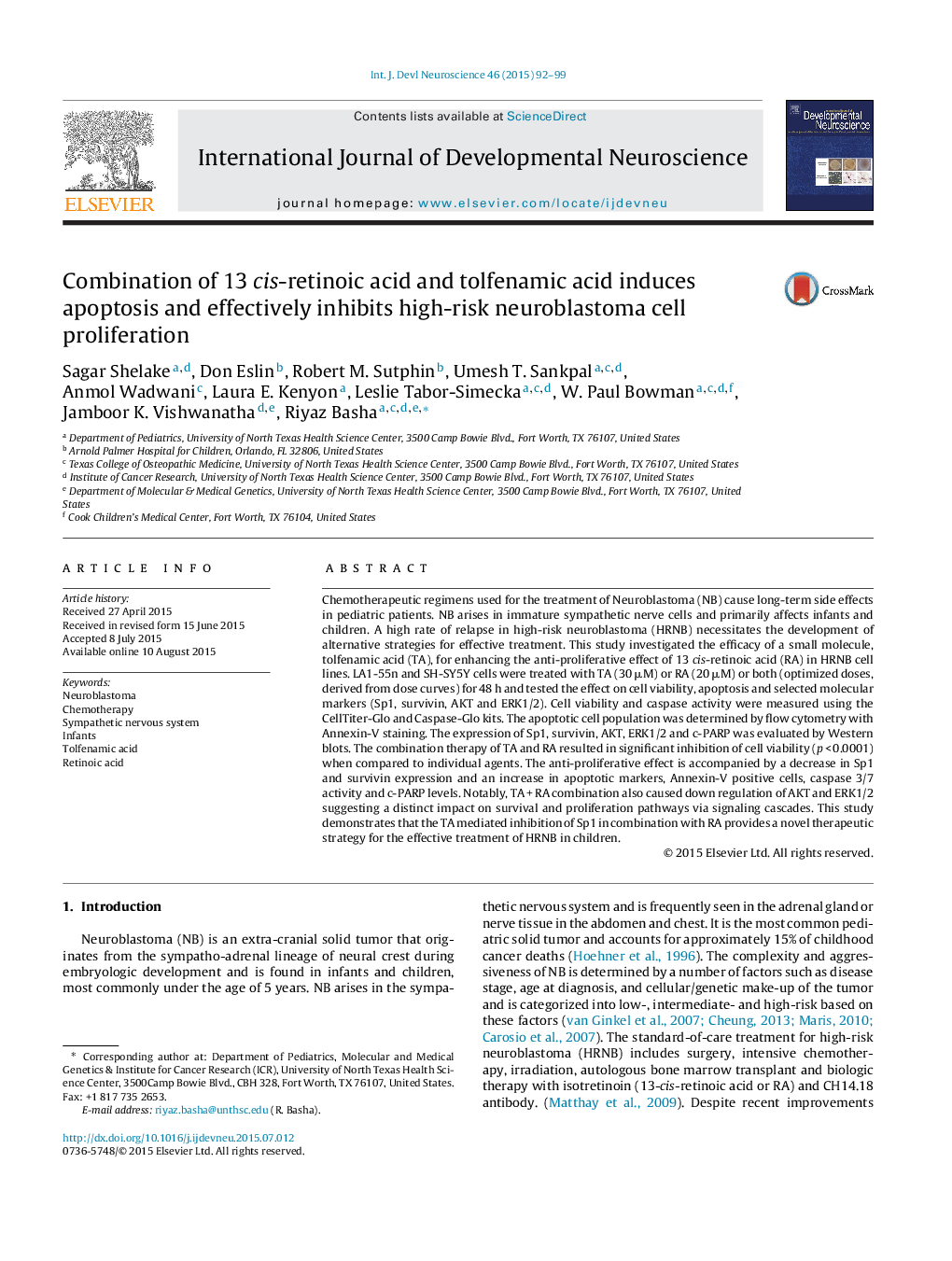| کد مقاله | کد نشریه | سال انتشار | مقاله انگلیسی | نسخه تمام متن |
|---|---|---|---|---|
| 2785696 | 1568385 | 2015 | 8 صفحه PDF | دانلود رایگان |
• Studied novel strategy to improve therapeutic efficacy in a childhood nervous system cancer.
• Targeting Sp1 enhances response to retinoic acid in neuroblastoma (NB) cells.
• Retinoic acid and tolfenamic acid combination effectively induces apoptosis in NB cells.
Chemotherapeutic regimens used for the treatment of Neuroblastoma (NB) cause long-term side effects in pediatric patients. NB arises in immature sympathetic nerve cells and primarily affects infants and children. A high rate of relapse in high-risk neuroblastoma (HRNB) necessitates the development of alternative strategies for effective treatment. This study investigated the efficacy of a small molecule, tolfenamic acid (TA), for enhancing the anti-proliferative effect of 13 cis-retinoic acid (RA) in HRNB cell lines. LA1-55n and SH-SY5Y cells were treated with TA (30 μM) or RA (20 μM) or both (optimized doses, derived from dose curves) for 48 h and tested the effect on cell viability, apoptosis and selected molecular markers (Sp1, survivin, AKT and ERK1/2). Cell viability and caspase activity were measured using the CellTiter-Glo and Caspase-Glo kits. The apoptotic cell population was determined by flow cytometry with Annexin-V staining. The expression of Sp1, survivin, AKT, ERK1/2 and c-PARP was evaluated by Western blots. The combination therapy of TA and RA resulted in significant inhibition of cell viability (p < 0.0001) when compared to individual agents. The anti-proliferative effect is accompanied by a decrease in Sp1 and survivin expression and an increase in apoptotic markers, Annexin-V positive cells, caspase 3/7 activity and c-PARP levels. Notably, TA + RA combination also caused down regulation of AKT and ERK1/2 suggesting a distinct impact on survival and proliferation pathways via signaling cascades. This study demonstrates that the TA mediated inhibition of Sp1 in combination with RA provides a novel therapeutic strategy for the effective treatment of HRNB in children.
Journal: International Journal of Developmental Neuroscience - Volume 46, November 2015, Pages 92–99
